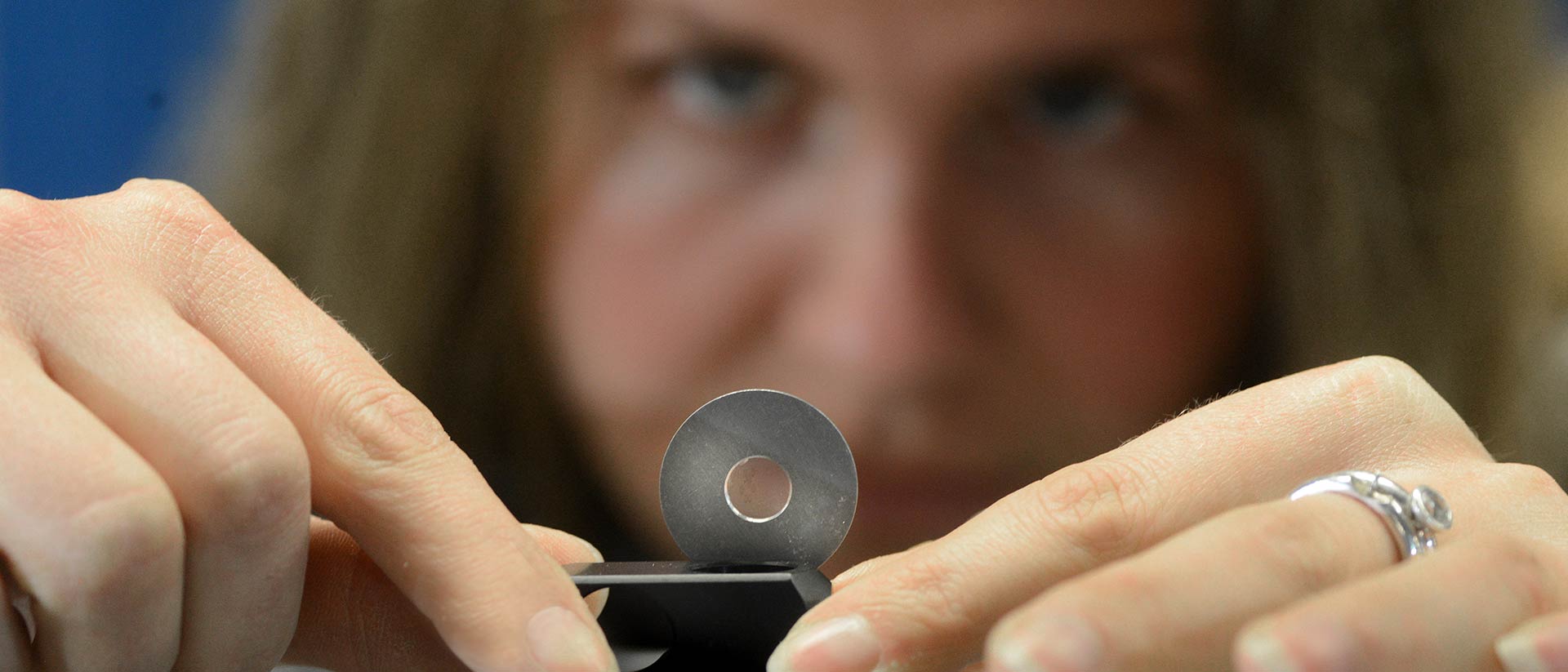Illusions in the Round
The technology of the future could be controlled by light.

The year is 2050, and we’re in a huge hangar in an industrial area on the edge of a megalopolis. The raucous sounds of a life-and-death struggle echo in the surrounding streets. In the hall itself, a host of merciless orcs mounts an apparently unstoppable onslaught against the small group of plucky comrades, who have assembled here this evening for an exciting adventure in the world of virtual reality. Though hopelessly outnumbered, the tiny fellowship repeatedly repulses the attacks launched by the onrushing battalions of the creatures of darkness. Above the tumult of the battlefield there is tumult in the sky. Against the backdrop of lowering stormclouds, pale lightning flashes erratically illuminate the scene, and thunderclaps compete with the already deafening sounds of clashing weaponry. One by one, the orcs succumb, and the holograms dissolve into nothingness. The doughty defenders have held the own, and won the day. – Then the lights go up, and the exhausted warriors troop off to the bar to quench their thirst and raise a toast to a famous victory.
The creation of virtual worlds, such as one in which hologram armies seek to conquer a hologram landscape, requires enormous reserves of processing power, and the processing must be done at mind-boggling speed. For, of course, a lumbering orc whose reactions are slow is no match for a nimble opponent. In spite of rapid progress, currently feasible rates of data transmission and processing are not high enough for game engines to be able to simulate virtual worlds in three dimensions on a large scale. But that is set to change. Future computers will have the capacity to operate as fast as visible light waves oscillate, enabling them to process data at speeds 100,000 times higher than those attainable today.
Light waves oscillate with frequencies on the order of one trillion (1012) times per second, as do and their associated electric fields. And these electric fields influence the behavior of the electrons that serve as the carriers of data and information in our digital computers. Thus light-based computers could perform one trillion elemental switching operations every second.
It will, however, take a while before we can expect to see the first optoelectronic data processing machines on sale. But the basis for this transformative technology has already been established. For instance, it is now possible to direct the motions of electrons at optical frequencies. – Then there is the problem of heat. Computer operations generate heat, and computers must at all costs be protected from overheating. The light-driven electronics of the future will also have to deal with this problem. The challenge here is to find a solid that supports the necessary interactions between light and matter, but is capable of rapidly re-emitting the light energy transferred to its electrons in the process. Silica (SiO2) – in other words, glass – is one promising possibility. Indeed, recent experiments have shown that the electrons in glass respond to the ultrashort light pulses as expected, but the amount of energy irreversibly absorbed is vanishingly small, while the rest is quickly dissipated. As a result, the glass does not heat when trains of light pulses are directed onto it in rapid succession over long periods. This discovery is so significant and spectacular that the researchers reported their findings in the leading scientific journal Nature.
So this quite literally ‘cool’ relationship between light and glass could provide a solution to the question of how electronic data processing can be accomplished at optical frequencies without running the risk that the computer will overheat. Optoelectronics would then have reached the maximal attainable rate of data transmission and data processing. Hence light-based computing at optimized optical switching rates could open up entirely new opportunities for data-intensive simulations, in fields such as climate modelling, forecasting of natural disasters or virtual tests of the action of new drugs in real organisms. In terms of possible applications for optoelectronics, the sky’s the limit.
Of course, none of this implies that close encounters with virtual orcs in the year 2050 will be a picnic. But at least their intrepid opponents will not have to do battle at torrid tropical temperatures because the optical computers needed to conjure up the holograms radiate so much heat!













